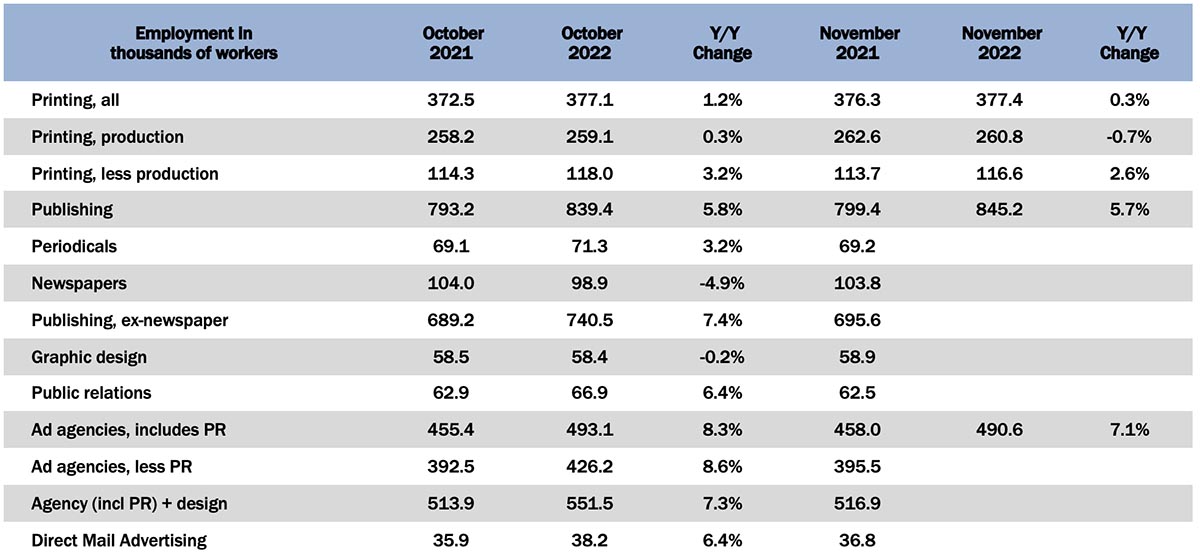
Over the summer, the industry’s attempts at recruiting production staff had been succeeding, albeit modestly, although as we moved into the fall, printing employment started to drop, although as of November, things seemed to be leveling off. Overall printing employment was essentially flat, being up +0.1% from October, and up +0.3% from November 2021. Production employment was up +0.7% (but down -0.7% from November 2021) while non-production employment was down -1.2% from October (but up +2.6% from November 2021).
Publishing in general had a generally strong summer, but ebbed as the summer came to a close. Overall publishing employment was up +0.7% from October to November 2022, but up +5.7% from November 2021.
Digging into the specific publishing segments (the reporting of which lags a month), employment is also fairly flat: from September to October 2022, periodical publishing employment was down -1.2%, while newspaper publishing employment was up +0.4%.
The creative markets were doing a bit better. Graphic design employment was up +1.0% from September to October 2022, ad agencies (less PR) were up +0.8%, and public relations was the bright spot this month, being up +3.2% in October. Direct mail advertising employment was also up +0.3% in October.
As for November employment in general, said the BLS in their December 7 report:
Total nonfarm payroll employment increased by 263,000 in November, and the unemployment rate was unchanged at 3.7 percent, the U.S. Bureau of Labor Statistics reported today. Notable job gains occurred in leisure and hospitality, health care, and government. Employment declined in retail trade and in transportation and warehousing.
… The change in total nonfarm payroll employment for September was revised down by 46,000, from +315,000 to +269,000, and the change for October was revised up by 23,000, from +261,000 to +284,000. With these revisions, employment gains in September and October combined were 23,000 lower than previously reported.
The unemployment rate had hit a low of 3.5% in September, so a rise to 3.7% is still pretty good. The U-6 rate (the so-called “real” unemployment rate which includes not just those currently unemployed but also those who are underemployed, marginally attached to the workforce, and have given up looking for work) dropped to a record low of 6.7%. Ultimately, the November employment report in general was higher than economists’ expectations.
Still, the labor force participation rate ticked down from 62.2% in October to 62.1% in November, and the employment-to-population ratio decreased from 60.0% to 59.9%. The labor force participation rate for 24–54-year-olds also ticked down from 82.5% to 82.4%.













